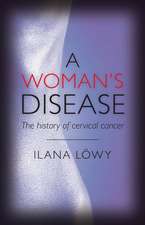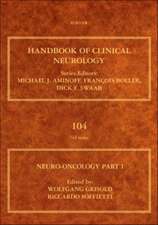Cancer Treatment An Update
Editat de P. Banzet, J. F. Holland, D. Khayat, M. Weilen Limba Engleză Paperback – 3 dec 2014
Preț: 757.40 lei
Preț vechi: 797.25 lei
-5% Nou
Puncte Express: 1136
Preț estimativ în valută:
144.95€ • 150.77$ • 119.66£
144.95€ • 150.77$ • 119.66£
Carte tipărită la comandă
Livrare economică 14-28 aprilie
Preluare comenzi: 021 569.72.76
Specificații
ISBN-13: 9782817807676
ISBN-10: 2817807677
Pagini: 932
Ilustrații: XXI, 901 p.
Dimensiuni: 170 x 244 x 53 mm
Greutate: 1.45 kg
Ediția:Softcover reprint of the original 1st ed. 1994
Editura: Springer
Colecția Springer
Locul publicării:Paris, France
ISBN-10: 2817807677
Pagini: 932
Ilustrații: XXI, 901 p.
Dimensiuni: 170 x 244 x 53 mm
Greutate: 1.45 kg
Ediția:Softcover reprint of the original 1st ed. 1994
Editura: Springer
Colecția Springer
Locul publicării:Paris, France
Public țintă
Professional/practitionerDescriere
This book gathers the educational lectures and the texts of the main presenta tions given at the 4th International Congress on Anticancer Chemotherapy which took place in February 1993 in Paris and was attended by 5 000 oncologists from all continents, physicians, students and nurses. This book aspires to give update of the most scientific and clinical aspects of modern oncology. It aims also at showing the prospects that are opened by the rapid progress of cancer biology. The editors are grateful to the authors whose scholarship de fines the quality of the book. Educational lectures The pathogenesis of human cancer metastasis I] Fidler Cancer is a collection of malignancies with each cancer of each organ consist ing of numerous subsets. This biologic and clinical heterogeneity is probably due to the different etiologies, origins, and selection pressures. Despite this heterogeneity, all malignant neoplasms have a uniform characteristic : the ability to invade host tissues and produce metastases. Clinical observations of cancer patients and studies with experimental rodent tumors have revealed that cer tain tumors produce metastasis to specific organs independent of vascular anat omy, rate of blood flow, and number of tumor cells delivered to each organ. The distribution and fate of hematogeneously disseminated, radiolabelled tumor cells in experimental rodent systems amply demonstrate that tumor cells reach the microvasculature of many organs.











